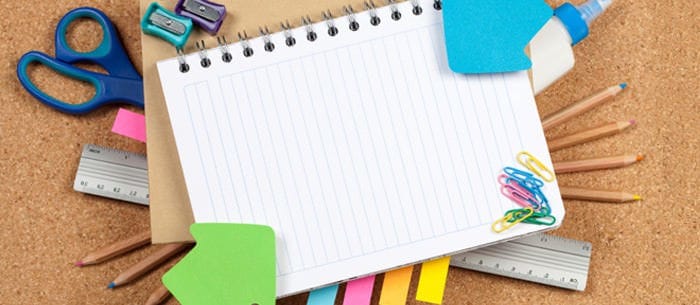In order for the student to receive the maximum individual instruction they need to bring a few things to their tutoring sessions.
Having a private tutor gives kids an opportunity for educational growth. Personal instruction catered to an individual student is a key benefit of tutoring. In order for your student to receive the most out of this instruction, send your child to his or her tutoring sessions with the following tools and supplies.
1. Pens and pencils
These things may seem obvious, but check with the tutor to see what they recommend. Sometimes different colored pens and pencils can be helpful to teaching methods.
2. Classwork, homework and tests
At the initial session, it’s important for the tutor to quickly understand the student’s area of difficulty. Amanda LeBleu, director of franchise support for Club Z, Inc says, “we feel it’s important that students have recent homework assignments, tests/quizzes, course syllabus and any other relevant classroom materials readily available for the initial session.”
This is not a show-and-tell time for what can be done. Tutors are looking for the root of the problem so they can move the student’s understanding to the next level. “This will give the tutor perspective of the expectations set by their regular teacher, as well as some clues as to where the student is struggling.”
Jim Narangajavana, VP and co-founder of C2 Education, and the academic team at C2 Education also asks for materials to be brought to tutoring sessions so the tutor may “tailor” the work to student’s needs. “We encourage our students to bring their textbooks, notes, homework, problem sets and anything else that might help their tutor understand what the students’ teachers at school have taught and what those teachers require to do well in their classes.”
3. Calendar or planner
Bring a planner, so both the tutor and student can plan ahead for upcoming tests and projects, as well as coordinate their tutoring sessions and agendas. It’s a way to keep the tutor connected to the daily classroom activities. And simply keeping a planner that will be seen by the tutor will help the student with organizing work. Keeping a calendar is a way for students to become aware of managing time and workloads.
4. Notecards
Encourage your tutor to communicate with your child’s teacher. Little notes can travel from teacher to tutor and back about classroom needs.
5. Textbooks and reading assignments
If students are struggling with reading, they should bring books from the classroom. The tutor can go over old chapters with your child or even look over future ones. This pre-reading will help build your child’s confidence to participate within the classroom.
6. Test-specific prep work
Some tutoring is test specific, such as SAT classes. In that case, the tutor may provide special work designed to help students with that test. Because your tutoring sessions are built around skills independent from classroom assignments, it is important to bring those materials.
7. Questions
Encourage your child to write down specific questions or things they don’t understand during the week. Then when it’s time for the tutoring session, they can be a place to start. Devote one notebook or section of a binder for questions.
8. Positive attitude
Of all things a parent can send their child to tutoring with, the most important is a positive attitude. “It’s important the student brings a positive attitude and an open-mind to every session,” LeBleu says. “Many times students can become frustrated and/or defeated when they don’t understand a concept.” As your child works with a tutor, those feelings should fade.
9. Snacks
Students may need a little extra jolt to get through a tutoring session — especially one that occurs after a long day in school. Make sure your child eats beforehand and has snacks and a drink available for a mid-session break. Try these power snacks as a start.
So get ready for the next tutoring session and make sure your student has everything on this list.




